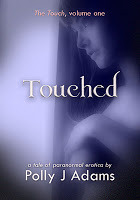Whose story is it anyway? Point of view in erotic fiction
Some writers are chameleons, slipping smoothly from oneviewpoint to another, finding the voice of diverse characters with the skill ofthe greatest mimics. Most of us, though, tend to find ways of telling stories thatwe know work, allowing us to concentrate on other aspects, such ascharacterisation, setting, atmosphere and the story itself. And, of course, inthe case of erotica, allowing us to concentrate on turning you on, seducing youwith our words.
When it comes to point of view, a lot of erotica is writtenfirst person: I saw this, I did that, I did him...It gets you inside your protagonist's head, gives you an inside feed on whatthey experience as the story progresses. Third person viewpoint, on the otherhand, gives you a little more distance, even though you can still get insidecharacters' heads. It can make the whole thing a little voyeuristic, and itallows you to switch from character to character (although please don't do thistoo much: it makes me dizzy!).
I write in lots of fields, under various names, and I loveexperimenting with ways of telling my stories. Erotica, however, is by itsnature very intimate, very personal, and this tends to dictate how I tell mystories.
Until recently, I've stuck to the woman's point of view.It's what I know, so I can be authentic. It's what appeals to me. It's whatturns me on. And I think it works for a lot of readers, too: female readerstend to prefer the woman's perspective, and from what I've picked up ondiscussion boards and talking to male friends, a lot of men don't want to gettoo intimate with a male viewpoint – they don't want another man there, intheir heads, when they're getting horny.
 My first erotic book,
You
,is a set of stories told first-person from the woman's perspective; taking arather unconventional twist, the stories are addressed to her male partner: Ido this and this is how you respond, and so on. I found that aparticularly intense viewpoint, and that book is still one of my mostsuccessful.
My first erotic book,
You
,is a set of stories told first-person from the woman's perspective; taking arather unconventional twist, the stories are addressed to her male partner: Ido this and this is how you respond, and so on. I found that aparticularly intense viewpoint, and that book is still one of my mostsuccessful.
Subsequent books stuck to a more conventional woman's tightthird-person viewpoint: she did this, she did that – but allowing us still toget inside her head. This is what works best for me, as a writer and as areader: it allows us to identify closely with the protagonist, without thatprotagonist being me.
My current paranormal series, The Touch, has drawn me away from this storytelling mode, though.The opening story had to be told from two perspectives, and so it opens withthe story told third-person from my male protagonist's viewpoint, and laterswitches to my female protagonist. It's been an interesting challenge tellingan erotic story from a man's point of view, and I can tell you I've had to payparticular attention to the research to get it right! An unexpected bonus isthe realisation of how erotic it can be to describe a single encounter fromboth sides: I know what it feels like to be fucked, but what are the physicalsensations of the man fucking me? How does he feel when he comes? What worksfor him?
 Having opened the series in the heads of both characers withthe first volume,
Touched
, I've stuckwith this approach for the second,
Touched Again
, and the story is told from both perspectives. With two more volumesto go, I'll stick with it. I like this approach and it certainly suits thestory, which is a bit more fully developed than with shorter pieces: whilethere's still an awful lot of sex in this series, including two large-scalegang-bang scenes (another first for me), the four stories are driven by theback-story of two lovers and the magic that contains them. To hold serialfiction like this together over several instalments, you need more than justhot sex. No, really you do. Alternating perspectives is one way of bothbuilding the story and hotting it up!
Having opened the series in the heads of both characers withthe first volume,
Touched
, I've stuckwith this approach for the second,
Touched Again
, and the story is told from both perspectives. With two more volumesto go, I'll stick with it. I like this approach and it certainly suits thestory, which is a bit more fully developed than with shorter pieces: whilethere's still an awful lot of sex in this series, including two large-scalegang-bang scenes (another first for me), the four stories are driven by theback-story of two lovers and the magic that contains them. To hold serialfiction like this together over several instalments, you need more than justhot sex. No, really you do. Alternating perspectives is one way of bothbuilding the story and hotting it up!
After this series, though, who knows? As I say, I've foundit quite horny getting into both partners' heads, and experiencing the sexscenes from both sides, so it's a technique I'm sure I'll use again. And if itworks for me, I hope it works for my readers, too!
When it comes to point of view, a lot of erotica is writtenfirst person: I saw this, I did that, I did him...It gets you inside your protagonist's head, gives you an inside feed on whatthey experience as the story progresses. Third person viewpoint, on the otherhand, gives you a little more distance, even though you can still get insidecharacters' heads. It can make the whole thing a little voyeuristic, and itallows you to switch from character to character (although please don't do thistoo much: it makes me dizzy!).
I write in lots of fields, under various names, and I loveexperimenting with ways of telling my stories. Erotica, however, is by itsnature very intimate, very personal, and this tends to dictate how I tell mystories.
Until recently, I've stuck to the woman's point of view.It's what I know, so I can be authentic. It's what appeals to me. It's whatturns me on. And I think it works for a lot of readers, too: female readerstend to prefer the woman's perspective, and from what I've picked up ondiscussion boards and talking to male friends, a lot of men don't want to gettoo intimate with a male viewpoint – they don't want another man there, intheir heads, when they're getting horny.
 My first erotic book,
You
,is a set of stories told first-person from the woman's perspective; taking arather unconventional twist, the stories are addressed to her male partner: Ido this and this is how you respond, and so on. I found that aparticularly intense viewpoint, and that book is still one of my mostsuccessful.
My first erotic book,
You
,is a set of stories told first-person from the woman's perspective; taking arather unconventional twist, the stories are addressed to her male partner: Ido this and this is how you respond, and so on. I found that aparticularly intense viewpoint, and that book is still one of my mostsuccessful. Subsequent books stuck to a more conventional woman's tightthird-person viewpoint: she did this, she did that – but allowing us still toget inside her head. This is what works best for me, as a writer and as areader: it allows us to identify closely with the protagonist, without thatprotagonist being me.
My current paranormal series, The Touch, has drawn me away from this storytelling mode, though.The opening story had to be told from two perspectives, and so it opens withthe story told third-person from my male protagonist's viewpoint, and laterswitches to my female protagonist. It's been an interesting challenge tellingan erotic story from a man's point of view, and I can tell you I've had to payparticular attention to the research to get it right! An unexpected bonus isthe realisation of how erotic it can be to describe a single encounter fromboth sides: I know what it feels like to be fucked, but what are the physicalsensations of the man fucking me? How does he feel when he comes? What worksfor him?
 Having opened the series in the heads of both characers withthe first volume,
Touched
, I've stuckwith this approach for the second,
Touched Again
, and the story is told from both perspectives. With two more volumesto go, I'll stick with it. I like this approach and it certainly suits thestory, which is a bit more fully developed than with shorter pieces: whilethere's still an awful lot of sex in this series, including two large-scalegang-bang scenes (another first for me), the four stories are driven by theback-story of two lovers and the magic that contains them. To hold serialfiction like this together over several instalments, you need more than justhot sex. No, really you do. Alternating perspectives is one way of bothbuilding the story and hotting it up!
Having opened the series in the heads of both characers withthe first volume,
Touched
, I've stuckwith this approach for the second,
Touched Again
, and the story is told from both perspectives. With two more volumesto go, I'll stick with it. I like this approach and it certainly suits thestory, which is a bit more fully developed than with shorter pieces: whilethere's still an awful lot of sex in this series, including two large-scalegang-bang scenes (another first for me), the four stories are driven by theback-story of two lovers and the magic that contains them. To hold serialfiction like this together over several instalments, you need more than justhot sex. No, really you do. Alternating perspectives is one way of bothbuilding the story and hotting it up!After this series, though, who knows? As I say, I've foundit quite horny getting into both partners' heads, and experiencing the sexscenes from both sides, so it's a technique I'm sure I'll use again. And if itworks for me, I hope it works for my readers, too!
Published on November 29, 2011 12:02
No comments have been added yet.



